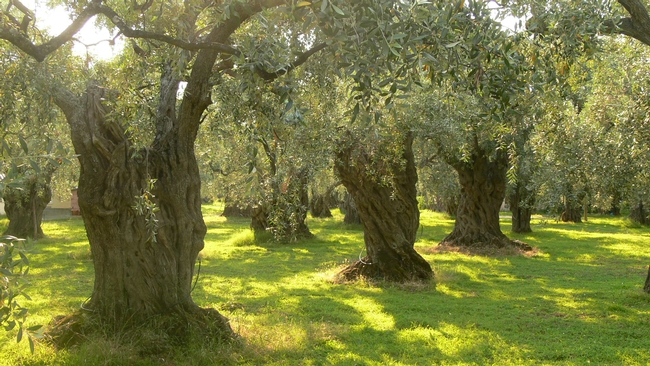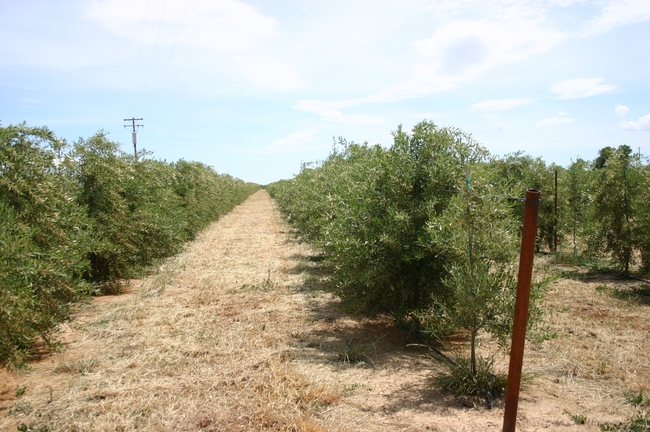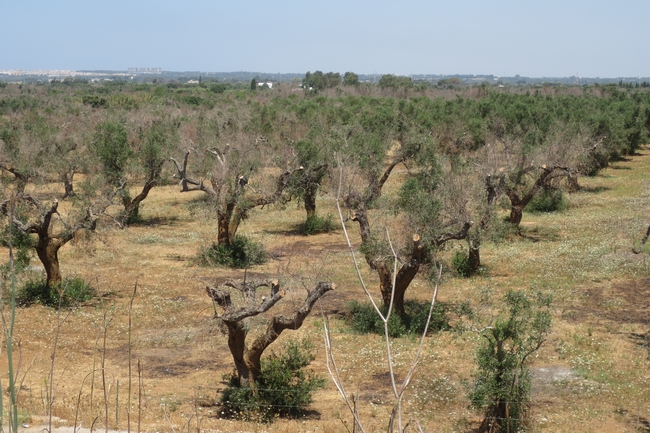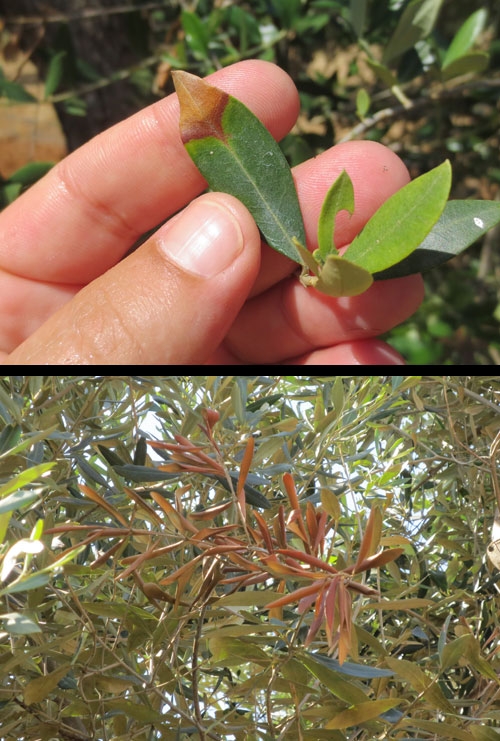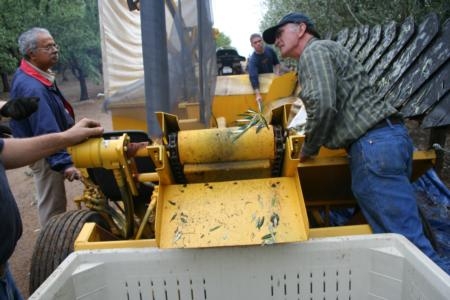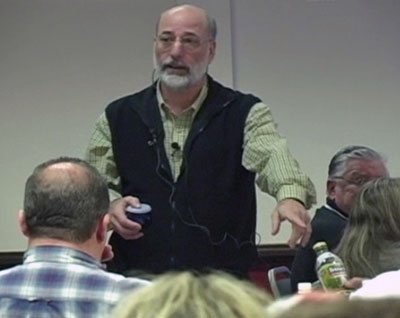Posts Tagged: Olives
UC releases new cost studies for growing olives
UC Agricultural Issues Center has released two new studies on the cost and returns of growing olives in the Sacramento Valley. One study focuses on producing table olives with the Manzanillo variety. The other study focuses on establishing a super-high-density orchard and producing olives for oil, using the Arbequina variety.
The cost analyses are based on hypothetical farm operations of well-managed orchards, using practices common to the region. Growers, UC ANR Cooperative Extension farm advisors and other agricultural associates provided input and reviewed the methods and findings of the studies.
The table olive study estimates the costs of an established orchard under production for table olives on 40 acres using hand pruning and hand harvesting methods. The companion study estimates the costs for establishing and producing olives for oil under super-high-density planting (726 trees per acre) using mechanical pruning and harvest. The estimated economic life of the table olive orchard is 40 years and the super-high-density orchard estimated economic life is 25 years. Both studies are in the Sacramento Valley using drip irrigation.
The authors describe the assumptions used to identify current costs for the olive crop, material inputs, cash and non-cash overhead. A ranging analysis table shows profits over a range of prices and yields. Other tables show the monthly cash costs, the costs and returns per acre, hourly equipment costs, and the whole farm annual equipment, investment and business overhead costs.
The new studies are titled:
- “Sample Costs to Produce Table Olives in the Sacramento Valley – 2016”
- “Sample Costs to Establish a Super-High-Density Orchard and Produce Olives for Oil in the Sacramento Valley – 2016”
Free copies of these studies and other sample cost of production studies for many commodities are available. To download the cost studies, visit http://coststudies.ucdavis.edu.
The cost and returns program is associated with the UC Davis Department of Agricultural and Resource Economics and the UC Agricultural Issues Center, which is a statewide program of UC Division of Agriculture and Natural Resources.
For additional information or an explanation of the calculations used in the studies, contact the UC Agricultural Issues Center at (530) 752-4651 or Jeremy Murdock at jmmurdock@ucdavis.edu.
New olive disease in Italy concerns California researchers
Olive farmers in southern Italy are dealing with a serious outbreak of olive quick decline syndrome, a new disease with symptoms that include leaf scorching, twig and branch dieback and, ultimately, tree death. In October 2013, the plant pathogen Xyllela fastidiosa was found for the first time ever in Europe and appears to be associated with the disease.
This has California researchers worried and baffled. The bacterium Xyllela fastidiosa has been present in the state for more than 100 years and can sometimes be found in olive trees. Trials conducted by USDA and UC researchers from 2008 to 2011 showed that strains of the bacterium found in California did not cause disease in olives.
“It's complicated,” said Elizabeth Fichtner, an olive and nut crop expert with UC Agriculture and Natural Resources (UC ANR). “The Italians found X. fastidiosa in sick trees, but the causal agent of the disease still remains to be identified by scientists.”
There are different subspecies of X. fastidiosa. In California, X. fastidiosa subspecies fastidiosa causes Pierce's disease in grapevines and almond leaf scorch disease. Another subspecies, multiplex, causes disease in almonds but not grapevines. A possible reason why California olive trees are unaffected by the bacterium is that the genotypes found in Italy belong to a different subspecies named pauca, a subspecies group not known to occur in the United States. Strains of X. fastidiosa subspecies pauca cause a serious citrus disease in Brazil and Argentina. The X. fastidiosa subspecies known from California do not cause disease in citrus.
Fichtner is working closely with USDA researcher Rodrigo Krugner of the USDA San Joaquin Valley Agricultural Sciences Center in Parlier to better understand the potential threat to California olives and keep California growers informed.
“Of course, we're concerned about diseases impacting olive trees in Italy,” Fichtner said. “From a standpoint of biosecurity, it's very important for us to be aware of the potential introduction of a new pathogen.”
Krugner traveled to Italy to view the olive trees with quick decline symptoms.
“They took me where it all started,” Krugner said. “Trees that were alive had scorched leaves, twig and branch dieback. I have been seeing olive trees in California with similar symptoms since 2008, but in Italy the disease is more severe. It's devastating.”
Surveys led by Krugner, dating back to 2008, showed that, among symptomatic ornamental trees in Southern California, 30 out of 78 were positive for X. fastidiosa.
“In the San Joaquin Valley, only 3 out of 121 were positive despite disease symptoms being the same between trees in the two regions,” Krugner said. “In greenhouse studies in which olive trees were inoculated with X. fastidiosa, the bacteria survived in the plants but produced no symptoms. In time, the bacteria disappeared.”
Krugner said he and Fichtner visited an olive orchard in the Fresno area where the trees were suffering from widespread leaf scorch symptoms and some dieback.
“The entire orchard had symptoms, every tree,” Krugner said. “But all samples were negative for presence X. fastidiosa by molecular tests and culturing.”
One possible explanation for the widespread and uniform distribution of the disease symptoms in the Fresno orchard was over watering and over working the soil, which may have damaged the roots facilitating the invasion of soil pathogens.
California olive growers and landscape managers with olive trees should be on the lookout for olive dieback symptoms. If new incidences of extensive dieback or scorch on olives are found, contact the local UC ANR Cooperative Extension farm advisor to facilitate early detection of potential new pathogens.
“Because of the regular movement of plants and plant materials across international borders, there is a constant flux of organisms,” Fichtner said. “We need to be aware of global trends in plant diseases and the establishment of insects that can spread disease.”
For more information about Xylella fastidiosa and olive quick decline syndrome in Italy, see an overview posted on the UC Berkeley plant disease page.
An initiative to manage endemic and invasive pests and diseases is part of UC Agriculture and Natural Resources Strategic Vision 2025.
Krueger wraps up 32-year career as UCCE tree crop advisor
“When I started, there were about 22,000 acres, now there are more than 68,000 acres,” said Krueger, who retired July 1 as UCCE advisor in Glenn and Tehama counties and director for UCCE in Glenn County. Part of that expansion can be attributed to Krueger’s research showing how almonds and walnuts can be produced on marginal soils with high density plantings and drip irrigation.
“Bill Krueger is a great asset to our agricultural community,” said Erick Nielsen, who grows prunes and olives in Orland.
“We have enjoyed working with Bill for many years,” Nielsen said. “He has always been the kind of guy to just jump right in and help. We have appreciated his dedication to agricultural research and his knowledgeable guidance.”
Raised on a farm in Prosser, Wash., Krueger was introduced to farming by his parents, who grew Concord grapes and cherries. He earned his bachelor’s and master’s degrees in horticulture at Washington State University, then worked for a year as foreman at Mt. Adams Orchard Company in White Salmon, Wash., tending cherries, apples and pears.
In 1980, Krueger moved to California to become the UC Cooperative Extension advisor for tree crops in Glenn County.
“I’ve spent my entire career in Glenn County,” remarked Krueger, who specializes in production of almonds, walnuts, prunes and olives.
Seeking opportunities for growers to diversify their crops, Krueger and his fellow UC Cooperative Extension advisor John Edstrom planted a test plot of walnut trees at the Nickels Soil Laboratory in Arbuckle in 1986.
They set up a walnut orchard with 202 trees per acre, much closer than the 60 trees per acre of a traditional orchard. The two varieties that Krueger and Edstrom planted produce a large proportion of walnuts on lateral buds, which allows for hedgerow planting and mechanical pruning. Each year, a giant hedger with eight 38-inch saws buzzed down one side of the tree rows, cropping back branches and encouraging production. In alternate years, they pruned the opposite side of the trees. Rather than being flood irrigated as most walnut orchards, the Nickels orchard was watered and fertilized using drip irrigation.
Crop yields from the dense walnut tree plantings compensated for the marginal soils. The successful demonstration plot led to thousands of acres of walnuts being planted on similar soils.
In 1992, he added responsibility for olives in Tehama County, where the number of acres of olive trees has doubled from 4,000 acres to approximately 8,000 acres. Krueger is internationally respected for his research identifying the most effective method of chemically thinning olives to increase the size of the fruit. Chemical thinning of olives has become a common practice among Sacramento Valley table olive growers.
Over the years, he has collaborated on the development of integrated pest management practices for almonds, walnuts and prunes. In 2004, Krueger was a member of the team that California Department of Pesticide Regulation honored with its IPM innovator award for the Integrated Prune Farming Practices Program.
“Over the years he has assisted us with many different pruning trials in both our olive and prune orchards,” said Nielsen. “The last project he helped us work on was a trial for various degrees of hand pruning versus mechanical pruning in prunes. Bill has a great sense of the current market for the different crops and has always been a front-runner on moving forward with research and development projects.”
Krueger developed pruning strategies to enhance early production of prunes while developing tree structure capable of supporting heavy crop loads. He helped refine mechanical thinning to manage prune crop size, a technique developed earlier by UC researchers, and his efforts to extend this research to growers helped it become a common practice when needed.
His work, in collaboration with others, on reduced pruning of almonds has helped growers save money by reducing pruning costs.
In addition to advising growers, Krueger served a total of 13 years as director for UCCE in Glenn County, from 1996 to 2001, then resuming the helm from 2004 until his retirement.
Krueger has applied for emeritus status with UC so that he can finish up a few projects, but also looks forward to working on his own 10-acre olive orchard south of Orland during his retirement.
On Aug. 17, Krueger will be celebrating his career with friends and colleagues at Mills Orchards in Hamilton City. For details, contact Jody Samons at (530) 865-1155 or jesamons@ucdavis.edu.
Florida citrus growers explore olive opportunities
Citrus growers in Florida, who are struggling with the devastating citrus disease huanglongbing, are considering growing olives, according to a report on the Tampa, Fla., ABC news affiliate.
Reporter Ryan Raiche covered a meeting at the University of Florida Citrus Research and Extension Center where UC Cooperative Extension farm advisor Paul Vossen introduced growers to olive production and marketing and offered citrus growers the opportunity to taste a variety of olives and olive oils.
“This is not a slam dunk, because this is a really peculiar crop that needs really specific things in order to flower and fruit,” Vossen said.
Olives thrive in a dry climate where it’s not too hot and not too cold. Vossen said rain during bloom season could wipe out the crop.
Ojai man appointed to Regional Water Quality Control Board
Ventura County Star
Gov. Jerry Brown has appointed Ventura County UC Cooperative Extension director emeritus Larry Yee to the Los Angeles Regional Water Quality Control Board.
The board oversees water quality issues and has the power to fine polluters.
Yee worked for the UC Cooperative Extension from 1975 to 2008 and was the Ventura County director from 1986 to 2008. He also was director of the UC Hansen Trust, which was set up to promote agricultural research and education.
Olive growers don't appreciate U.S. support of Morrocon farmers
To ease poverty and stimulate economic growth, the U.S. government has pledged $301 million to help Morrocon farmers rehabilitate existing olive trees and expand olive, almond and fig production. However, San Joaquin farmers say the move undercuts the struggling local industry, according to an article in the Porterville Recorder.
“It’s ludicrous,” said farmer Rod Burkett. “We’re a small industry. We have less than 24,000 acres (of olive trees) in the state. [Morocco] has more than 1 million acres. That gives them a real advantage. Now [the U.S. government] is taking my tax money and giving it to those people so they can make their trees more productive.”
Recorder staff writer Alex Schultz used UC Cooperative Extension figures to illustrate the hardships California olive growers are facing this year. Production is so low - down 86 percent from last year - that harvesting any fruit may not be worth it. Meanwhile, it costs $1,400 each season to maintain an acre of olive trees.

olives

